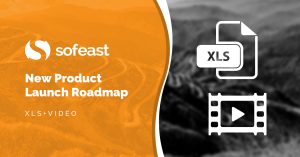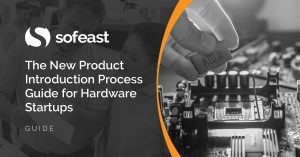 This is the final post in our series on the New Product Development process.
This is the final post in our series on the New Product Development process.
Let’s assume you have your new product selling and business is established. It is time to review how well you have done. How is your progress compared to the original business forecast? What are the areas for improvement? Let’s look at the final part of phase 8 here.
Why it’s vital to review the progress of your business
To start with, you will be focused on the task in hand from a day to day operational point of view (making sure the business is running smoothly). Once the business is up and running, however, it is prudent to spend a bit more time planning the long-term strategy of the business
This is the ideal time to review and compare the business strategy from when the product was launched against where the business is now. It is important to keep the strategic direction of the business aligned, not only with the core of the business but also the current market trends.
Areas that should be considered when reviewing the progress of your business:
- Is the business moving in the same or different direction to what you expected?
- What do you need to do within the business to ensure you can get to where you want to be in the next three to five years?
- Understanding of market trends and being able to adjust accordingly to maximize the business benefits (commercial exploitation).
- Are there enough or the correct resources in place in order for the business to meet the targets set within the strategic plan?
- What methods are being used to measure success, ensure the correct metrics are in place to allow you to monitor the performance of the business and make real-time adjustments?
Review your financial status
You can be making a million dollars in revenue and still be losing money. Businesses all too often fail because of poor financial management and lack of planning.
The key elements to review with respect to your company’s financial well being are:
- Cash flow – This represents all the cash coming in and all the cash going out. It is paramount that cash flow records are maintained and that you understand exactly where you are at any given moment in time.
- Working capital – Monitor the amount of inventory you have. Having too much inventory ties up cash whereas having too little inventory and you are in danger of running out of stock. Both these scenarios have an impact on the business and need to be managed carefully.
- Loans or credit – Make sure you have the most appropriate level of credit for your business. You should seek advice from a business accountant who would be able to advise you on what is best for your individual circumstances.
Interested in this topic? You may also like Sofeast’s New Product Launch Roadmap [XLS + Video]
Our ‘new product launch roadmap’ unveils the steps that your supplier will never tell you are needed, and yet all veteran buyers consider as indispensable. Hit the button to get your copy:
Competitor Analysis
Keeping an eye on your competitors is good practice from a business perspective. Understanding your competitors allows you to make smart decisions for the business, potentially allowing for new product development of a next generation product or to develop a brand new concept to be moved through the New Product Development (NPD) process.
- Who are your main competitors?
- Are they differentiating themselves in order to obtain great market percentage?
- How do you rank from a pricing point of view amongst your competitors?
- What are their sales distribution channels and how are they different to yours?
- Is their customer profile different to yours and can you win some of the market share?
These days it is easy to find out what a competitor’s reputation is and how customers have found their experience in dealing with a company, especially with social media sites. That being said, it works just as well for the competition to check up on you and how your customers are rating their experience dealing with you…
Your Business Structure
You need to review the current business structure and understand if what you have now can support the growth of the business, once your new products are on the market. If the business growth is in line with forecasts set out in the strategic plan, is the current business structure flexible enough to support that growth?
Areas to consider when evaluating the business structure are:
1. Premises
- Are you tied into any long-term rent agreements or do you own the land?
- Do you have the capability of expanding physical if needed?
- What would the impact be if you had to move location?
2. Facilities
- From a manufacturing point of view, is all the necessary equipment in place to handle a capacity increase?
- Do you have a plan in place to cater to over-demand?
- Is manufacturing optimized from a lean point of view?
3. Information Technology
- Is the current IT system capable of the flexible demands it may encounter?
- Is the current system up-to-date enough or does it require upgrades? If upgrades are required, what plans do you have in place for alternative system reviews and training?
- Can all staff (those that require it) access the business information they require from anywhere in the world?
4. People and Skills
- Is the staffing level adequate to fulfil the demands within the forecast?
- Do employees have the correct skills to complete the desired outcome?
- Make sure the HR plan is kept up-to-date yet flexible enough to adapt to demands.
(The source for most of the checkpoints listed above is “Review your business performance” on gov.uk/business).
Next Step
So now you have reviewed your business. You understand what you are doing and how you are achieving it, and what your plans are for growth over the coming years. You should be in a good situation to consider additional New Product Development projects in order to have new life injected into the business.
Want to learn more about the new product introduction process for hardware startups?
Whether you’re some way along the process, or just starting out, Sofeast’s guide covers everything hardware startups need to know for making a new product in China and successfully bringing it to market.
Hit the button below to read the guide:



